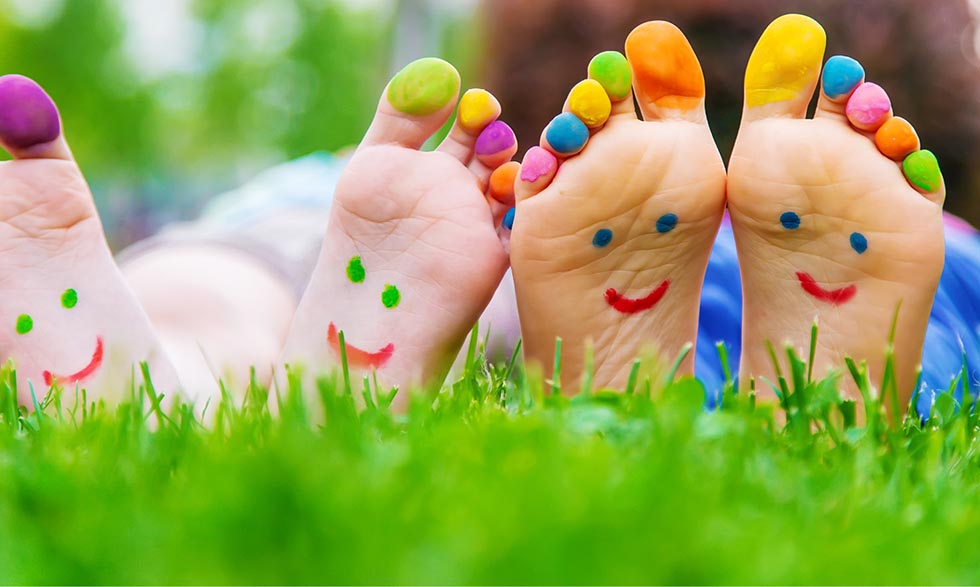Our feet are mechanical wonders. They support the weight of our bodies and allow us to stand, balance, and move through the world. Just like any other part of your body, your feet need care to stay healthy, active, and strong—and to prevent problems later!
Common foot problems
Did you know that your feet are made up of 26 bones, 33 joints, and more than 100 muscles, tendons, and ligaments? These parts work together so you can walk, run, skip, dance, and more. But this complexity—and the stress your feet undergo each day—also means there’s a lot that can go wrong.
Some common problems include:
- Athlete’s foot. A fungal infection that causes itching, burning, and skin scaling.
- Bunions. Bony, painful bumps that form at the big toe joint.
- Corns and calluses. Thickened, often painful areas that form due to friction or pressure on the skin. These often develop on areas of the feet where bones rub against shoes.
- Hammer toe. A toe that curls downward at the middle joint.
- Ingrown toenails. Toenails that grow into the skin, causing pain and inflammation.
- Plantar fasciitis. Heel pain that’s caused by inflammation of the tissue that supports the arch of your foot.
- Diabetic foot ulcers. Open sores that can form on the feet of people with diabetes.
Learn more about other injuries and disorders of the feet, ankles, toes, and heels.
Listen to your feet
Foot problems can be more than just a pain in the…foot. They can sometimes signal other health issues such as arthritis, diabetes, or nerve damage. Left untreated, they can even cause pain and dysfunction in other parts of your body, including your back, hips, and knees.
Catching foot problems early is key to preventing them from getting worse. Pay attention to:
- Changes in the skin or nails (such as cracks, cuts, sores, or discoloration)
- Pain, swelling, or redness
- Tingling, burning, or numbness
- Stiff or swollen joints in the foot or ankle
- Difficulty walking or balancing
If you notice any of these, or if you have new, severe pain that doesn’t go away with rest or over-the-counter pain medication, it’s time to talk to a doctor.
This is especially important if you have diabetes. Diabetes can lower the amount of blood flow and damage nerves in your feet, making problems more likely. Learn more about how diabetes affects the feet and how to prevent problems.
Simple steps for happy feet
- Wash your feet every day. Use soap and water and dry them thoroughly, especially between the toes. A warm foot bath can be a relaxing treat! Moisturize any dry, rough, or cracked areas (such as the heels) and put on clean, dry socks when you’re done.
- Check your feet often. Look for any cuts, sores, blisters, or changes in skin color. If you have diabetes, pay special attention to your feet, and see your doctor regularly for checkups.
- Trim your toenails regularly. Cut them straight across and not too short. This helps prevent cuts and ingrown toenails.
- Wear comfortable, supportive shoes. Choose footwear that fits you well—not too tight, not too loose. Your feet can change over time, so ask to have them measured each time you shop for new shoes.
- Keep your feet active. Stretches and exercise help improve blood flow, strengthen your feet, and help with flexibility. If you need to sit for a long time, put your feet up to improve blood flow and take frequent breaks to move your body.
Your feet are your foundation. Treat them right, and they will take good care of you!






